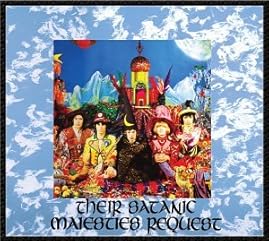 Image via WikipediaScott McKenzie immortalised the 1960s hippie culture with his hit song, "San Francisco" (Be Sure To Wear Flowers In Your Hair). The lyrics spoke of a youth movement that rose in the mid 1960s in America and swiftly spread to other nations.
Image via WikipediaScott McKenzie immortalised the 1960s hippie culture with his hit song, "San Francisco" (Be Sure To Wear Flowers In Your Hair). The lyrics spoke of a youth movement that rose in the mid 1960s in America and swiftly spread to other nations.The word "hippie" is derived from "hipster" and early ideology set out the anti-establishment values of the Beat Generation. Along with the ideology came waves of sexual freedom and expression, widespread use of psychedelic drugs and the introduction of psychedelic rock music.
The Haight-Ashbury district of San Francisco became a mecca of hippie culture. Fragments of flower power remain, but the Haight today is nothing like it was four decades ago. Smoke shops still dot the landscape with exotic names like Dreams of Kathmandu and Pipe Dreams, but only two distinct sections of the Haight remain.
The Upper Haight stretches from Stanyon to Masonic and is the commercial centre. It features exclusive boutiques, high-end vintage clothing shops, second-hand stores, trendy restaurants and internet cafes. The neighbourhood deteriorates as it moves towards Golden Gate Park. The Lower Haight, which spreads from Divisidero to Webster, is a different and rougher neighbourhood. The many dance music record shops and clubs like The Top attract many DJs and party people.
The hippie movement left its mark on American culture, influencing popular music, television, film, literature, and the arts. One has but to look around to see the hippie vision in contemporary times. Everything from health food to music festivals to a loosening of sexual mores and even the promise of cyberspace had its roots within the hippie group dynamic.
It should also be noted that the hippie movement had its dark side, initiated not by its belief system but by dark and evil followers such as Charles Manson and his murderous crew of drifters and misfits.
A visit to San Francisco and the Haight-Ashbury region truly is a fascinating glimpse into a world changing period in history. Use First Choice Discount Codes and First Choice Discount Vouchers for tours that will transport you to some of the sights of this colourful neighbourhood. When travelling, a visit to the Grateful Dead House is a recommended sight. Located at 710 Ashbury Street, the famous rock group lived together with many other transients in this building that dates back to 1890 and was built by the Cranston-Keenan architect team (former US Senator Alan Cranston’s grandfather).
No tour of the Haight-Ashbury section would be complete without a stop at the Red Vic Movie House. Located at 1727 Haight Street, this movie house is known for its vast selection of cult, independent and premiere films offered at reasonable prices. You can buy organic treats and popcorn with or without yeast and/or sip some coffee or tea. This unique theatre offers both couches and theatre seats and, at the front window, a calendar of month-to month film features.
Young people flocked to the intersection of Haight & Ashbury in search of a dream. It is this quest that remains to this day and its promise, however tenuous, needs to be remembered.
Additional Sources:
http://www.sfgate.com/neighborhoods/sf/haight/








